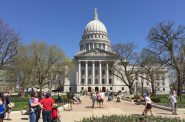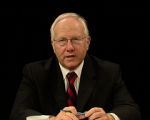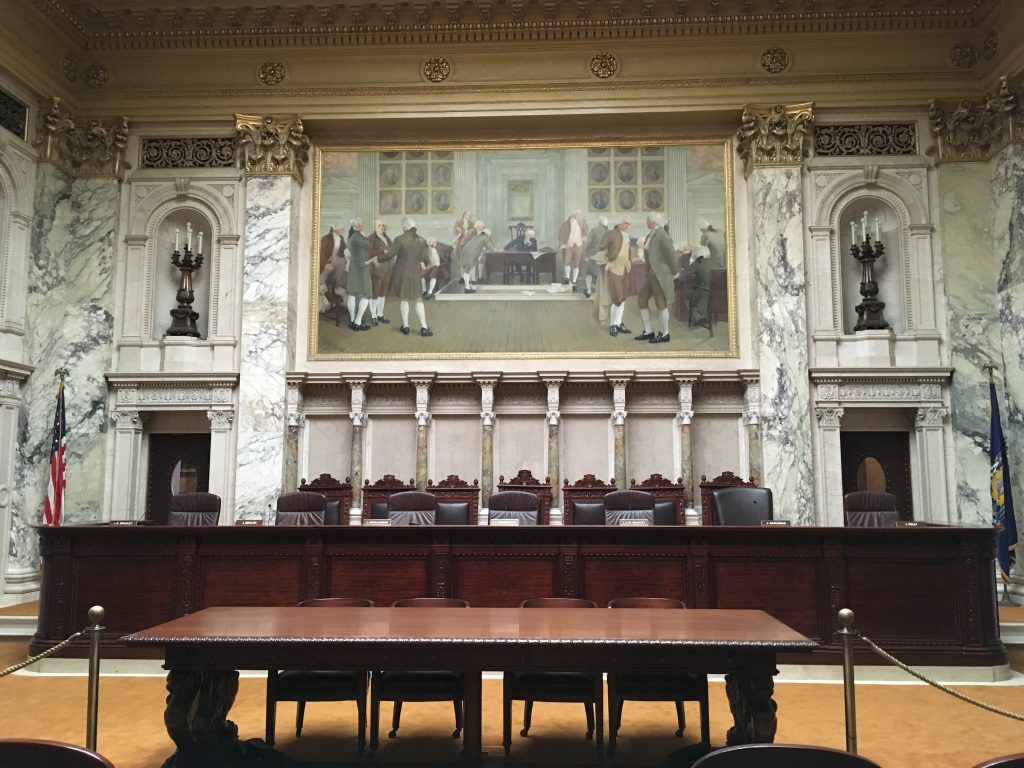Supreme Court Justices Call for More Security
GOP legislators reject $2.2 million proposal. But that was before Minnesota killings.
Wisconsin’s court system has done the most to publicly respond to the growing threats to elected and appointed public officials like the June 14 shooting deaths of a leading Minnesota Democratic lawmaker and her husband and the wounding of another Minnesota Democratic legislator and his spouse.
The accused killer, Vance Boelter, had the names of 11 public officials in Wisconsin, including U.S. Sen. Tammy Baldwin, Rep. Mark Pocan and Rep. Gwen Moore on his list of potential targets.
As a result of the Minnesota attacks, new security checks — metal detectors and bag searches — were in place when the Wisconsin Legislature convened last week. It was unclear what Capitol security changes would be permanent, however.
Since 2023, Supreme Court justices have made the most public calls for new protections.
The Supreme Court marshal tracks threats against Wisconsin justices and judges that are credible enough to be referred to local law enforcement agencies. Between January and March of this year, there were 22 threats; in 2024, 29; in 2023, 46; in 2022, 30.
“Judicial security is a very real and growing concern,” then-Chief Supreme Court Justice Annette Ziegler said in last year’s State of the Judiciary address. “It is incumbent upon us to have a safe and secure judicial system, not only for our judicial officers, but also for the members of the public.”
“It is a basic tenet of judicial independence that judges should not be intimidated, influenced, threatened, or killed for doing their job,” Ziegler added. “And these should not be used to control the outcome of a case, nor the consequence of how a judge ruled or might rule in a case.”
Ziegler then cited four attacks on judges or their family members nationally since 2005, including the 2022 killing of retired Wisconsin Circuit Court Judge John Roemer at his New Lisbon home by Douglas Uhde, who Roemer had sentenced in 2005. Uhde died of a self-inflicted gunshot wound. Ziegler also noted the capture of someone planning to kill U.S. Supreme Court Justice Brett Kavanaugh.
“These incidents are unfortunately becoming all too common,” Ziegler said.
Ziegler thanked Wisconsin legislators for enacting three new laws last year that “ensure improved protection for Wisconsin judicial officers.”
One made it a Class A misdemeanor “to picket or parade at the residence of a judge with the intent to interfere with, obstruct, or impede the administration of justice.” Another created a judicial security profile form judges can file with a local law enforcement agency “to develop an emergency response plan that is now prohibited from disclosure under the Public Records Law.”
A third new law “allows judicial officers to request that certain information be protected from public disclosure and removed from public display, including information of the judicial officer’s immediate family.”
But the request of Ziegler, soon-to-be Chief Justice Jill Karofsky and Democratic Gov. Tony Evers for $2.2 million over the next two years to fund a new statewide police agency, Office of the Marshals of the Supreme Court, was rejected by Republicans who control the Legislature’s Joint Finance Committee on June 11 — three days before the Minnesota attacks.
A Legislative Fiscal Bureau summary of the Court’s request said aides to Evers in 2023 assigned four officers to monitor and respond to threats to judges. Funds for those four came from federal COVID relief programs and will expire on Aug. 31, 2026.
After the Finance Committee vote, Karofsky said the justices remain “deeply committed to the safety and security of every person who walks into a courthouse.” She will become chief justice on July. 1.
Legislative leaders said the attacks on the homes of Minnesota legislators had shaken Wisconsin lawmakers.
“The idea of trying to make the Capitol into a fortress, I don’t know if that necessarily would even have ever done anything in this situation to help the awful situation that happened in Minnesota,” Assembly Speaker Robin Vos said. “We made the right decision to increase security here.”
“Remember that these threats, even after the suspect has been apprehended, have had real impacts on the mental health of everyone affected, and we ask that you please respect the duress members and their families have been put through,” added Assembly Democratic Leader Greta Neubauer.
Although visitors to other state capitols must clear metal detectors, that does not occur in Wisconsin’s Capitol.
At least not yet.
Steven Walters started covering the Capitol in 1988. Contact him at stevenscotwalters@gmail.com
If you think stories like this are important, become a member of Urban Milwaukee and help support real, independent journalism. Plus you get some cool added benefits.
The State of Politics
-
Evers, Republicans Close on Budget’s Tax Cut Plan
 Jun 16th, 2025 by Steven Walters
Jun 16th, 2025 by Steven Walters
-
New Legislators Sponsor ‘Wish List’ Bills
 Jun 9th, 2025 by Steven Walters
Jun 9th, 2025 by Steven Walters
-
Wisconsin Has Record Number of Female Legislators
 Jun 2nd, 2025 by Steven Walters
Jun 2nd, 2025 by Steven Walters





















